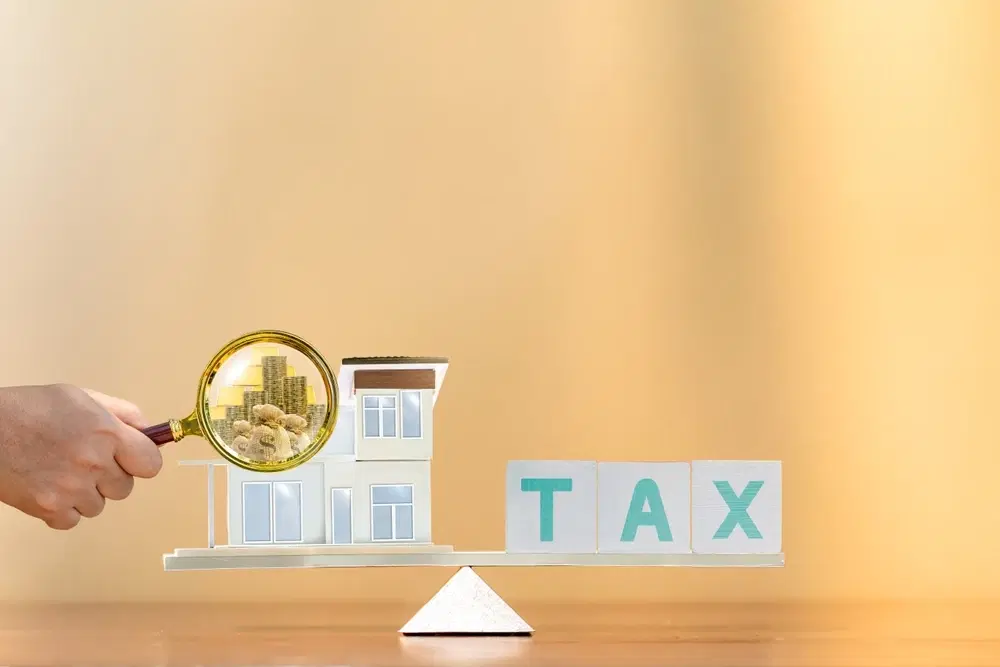
Loans
•05 min read

Are you repaying a home loan and wondering if your payments can ease your tax burden? Many homeowners often miss out on crucial tax-saving opportunities simply because the intricacies of the Income Tax Act can be challenging to decode. In this guide, we explain in simple terms whether home loan repayments come under Section 80C and how you can benefit from deductions on both principal and interest components. By understanding the rules, you can optimise your tax savings while enjoying the rewards that come with smart financial planning.
Section 80C is a provision in the Income Tax Act designed to offer tax relief on a variety of investments and expenses. One of these is the principal repayment of a home loan. When you pay off the principal on your home loan, you become eligible for a tax deduction. Besides home loans, other investments such as provident fund contributions, life insurance premiums, and certain savings schemes also qualify under this section.
For your home loan principal repayment to qualify under Section 80C, you must ensure that the payment is made for acquiring or constructing a house. The rules specify that you can claim a deduction of up to ₹1.5 lakh annually. In addition to the principal, some related expenses such as stamp duty and registration charges incurred in the purchase of the property are also eligible for deduction, though only in the year these costs are paid. Proper documentation, including loan repayment certificates from your lender, is essential to substantiate your claim.
A common misunderstanding is that the entire home loan amount—including interest payments—qualifies under Section 80C. In reality, only the principal repayment, along with eligible one-time expenses like stamp duty, come under this section. The interest component is instead addressed separately under another section of the Income Tax Act. Keeping your documents in order will help avoid any confusion during tax filing and ensure you claim the correct deductions.
Section 24 of the Income Tax Act provides tax relief on the interest component of your home loan. For those with self-occupied properties, you can claim a deduction on home loan interest up to ₹2 lakh each year. This means that as you pay off the interest on your home loan, a significant portion of it may be exempt from tax, reducing your overall tax liability.
If you have been paying interest on your home loan before the construction of your property is complete, there's good news. The interest paid during the pre-construction period can be claimed in five equal instalments starting from the year of possession. This feature ensures that you do not lose out on tax benefits even during the early stages of your loan repayment journey. Make sure to keep all interest certificates and related documents to support your claim.
When you take a home loan jointly with someone else, both co-borrowers can individually claim the tax benefits provided they are also co-owners of the property. This equates to a potential increase in the total amount of tax relief you can enjoy. Joint home loans allow each borrower to claim deductions on both the principal and interest components as per their share, making it a rewarding option for co-owners planning their finances together.

For first-time homebuyers, Section 80EE offers an additional deduction of up to ₹50,000. However, this benefit comes with eligibility criteria, including a restriction on the loan amount, which should typically be below ₹35 lakh, and the property value should remain under ₹50 lakh. This deduction provides extra relief and makes the dream of owning a home more accessible by reducing the tax outgo further.
First-time buyers should consider combining the deductions available under Section 80C and Section 24 with the additional benefits of Section 80EE. A coordinated approach that includes timely investments and accurate documentation can lead to maximised tax savings. By understanding how each section works, you can strategically plan your repayments and document your expenses properly to gain the greatest benefit from the provisions of the Income Tax Act.
When it comes to declaring your home loan for TDS and tax purposes, the essential documents include loan repayment certificates, interest certificates from your lender and proof of property ownership. Ensure that these documents are up to date and readily available during the filing of your Income Tax Returns (ITR) to avoid delays or errors in claim processing.
Filing your ITR for home loan deductions is straightforward. Start by gathering all your supporting documents. In your ITR form, specifically ITR-1 or ITR-2, enter the details of your principal repayment under Section 80C and the interest payment under Section 24 in the appropriate sections. Double-check each entry and verify that you have selected the correct deduction section. This simple process ensures that you receive the full benefit of your home loan tax relief.
Accurate reporting of your home loan details not only maximises your tax benefits but also safeguards against potential penalties or audits. Ensure that every figure is precise by cross-checking your documents with your ITR entries, or consider consulting a tax advisor for complex scenarios. Clarity in reporting is key to optimising your financial planning.
For a robust financial strategy, taxpayers can combine deductions across Sections 80C, 24, and the provisions for first-time buyers such as Section 80EE. By aligning the deductions on principal repayments and interest payments, you create a holistic approach to reducing your taxable income each year. Practical planning and consultation with a financial advisor can help identify the best mix of deductions suited to your individual situation.
-1e18e07d-89f4-4e70-9a99-1bf8d854b9d8.png&w=3840&q=75)
Integrating home loan tax benefits with your overall financial planning can pave the way for a more secure future. By maintaining a schedule of deductions and ensuring timely payments, you manage not only your loan but also your long-term investments. Smart financial planning, coupled with the benefits available under the Income Tax Act, helps maintain a balanced financial portfolio while keeping tax liabilities in check.
In addition to the tax benefits discussed, remember that loan disbursals processed through our system earn you 500 NeuCoins. This reward is designed to enhance your overall savings and brings an added advantage to your financial planning.
No, the interest component of a home loan is claimed under Section 24, not Section 80C.
You can claim up to ₹1.5 lakh for the principal repayment under Section 80C and up to ₹2 lakh for the interest payment under Section 24 on a self-occupied property.
Yes, if you are a co-owner, each borrower can individually claim deductions on both principal and interest repayments.
Enter the details of the principal repayment under Section 80C and interest payments under Section 24 in the relevant sections of your ITR form, ensuring that all documents are accurately referenced.
In summary, while home loan repayments do not come under Section 80C in their entirety, understanding the division between principal and interest can lead to significant tax savings. By utilising available deductions for principal repayments, interest payments, and additional benefits for first-time homebuyers, you pave the way for a healthier financial future. Accurate documentation and a strategic approach to your income tax returns further secure these advantages, ensuring that your investment in a home also translates to smart tax planning.